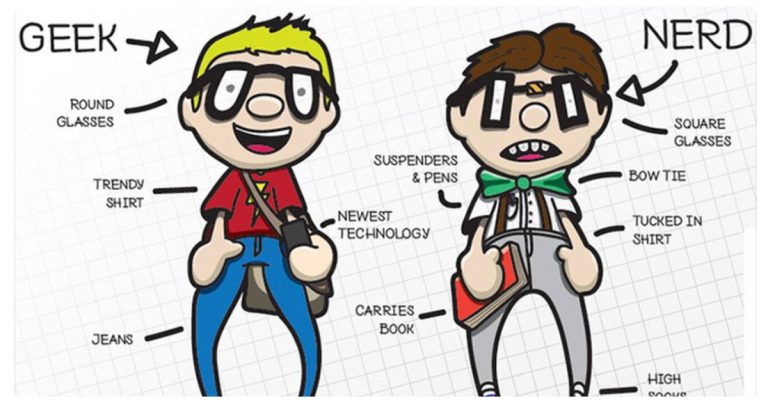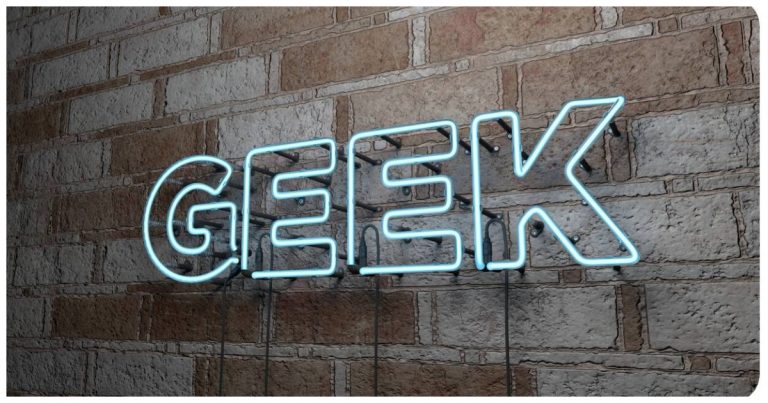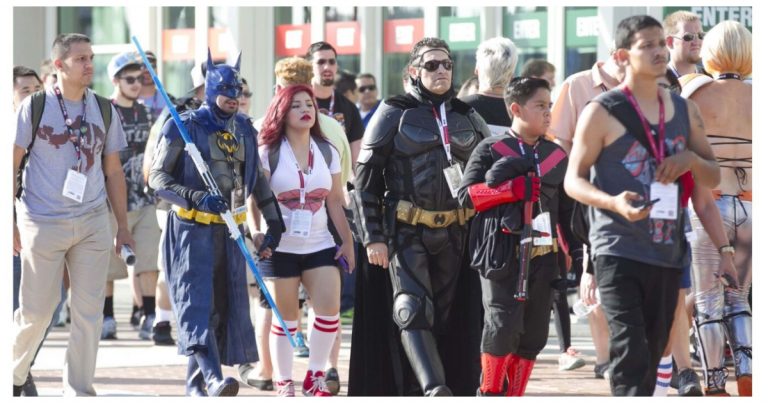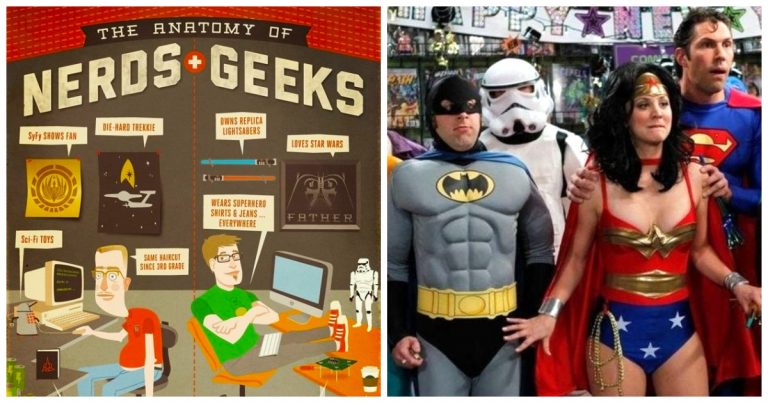A History of Geek Culture: From Dungeons & Dragons to the Metaverse
Geek culture has evolved from the fringes of society to become a force in entertainment and technology. Once for social outcasts and smarties, geek culture is now a part of pop-culture, tech advancements, and entertainment. Today, being a geek is not just cool, it’s a mark of pride.
It’s a remarkable rise of an underground culture to one that is now prominent in media, business, and society. At Grumpysharks, we’re examining the history of geek culture, how it made the leap from the undiscovered world to global, and how it shaped the present.
#1 The Rise of Role-Playing and Tech Enthusiasm (1970s–1980s)
The growth of role-playing and technology enthusiasm (1970s – 1980s)
The 1970s and 1980s were crucial decades in the development of geek culture in the form we see today. It was in these decades that organized fantasy gaming and technology-based communities emerged that would ultimately lead the way for the geeker culture that we know today.
Dungeons & Dragons and the Emergence of Organized Fantasy Gaming
One of the building blocks of geek culture’s early development was the launch of Dungeons & Dragons (D&D) in 1974. This role-playing game designed pretty much by Gary Gygax and Dave Arneson offered gamers the ability to turn their love for fantasy into an immersive experience. D&D captured the hearts and minds of people by allowing fantasy fans to create their heroes and demons and monsters, to collaborate and share stories while exploring vast fantasy worlds.
Dungeons & Dragons was one of the first organized fantasy games, and it was no surprise that it would become the bedrock upon which the role-playing game (RPG) industry was built upon, and ultimately foster the creating of a community of gamers who would help further develop the geek culture we see and interact with today.
Early Computer Enthusiasts, Hacker Culture, and Bulletin Board Systems
Alongside the rise of tabletop gaming, the 1970s also saw the beginnings of early computer enthusiasts, and the hacker culture (which would later become the impetus for Silicon Valley) that appeared with the development of personal computers, along with Bulletin Board Systems (BBS) in the 1980s, allowed people interested in technology to funnel their interests and knowledge to push their ideas and development of hardware or software beyond their own personal walls.
These computer hackers and tech geeks were laying out the future of personal computing when Apple, Microsoft, and Intel were still a figment of the imagination. What I find most interesting about hacker culture is the creativity and innovation as a way to solve a problem in some ways became the culture or shaping principle of the tech industry.
Science Fiction Fandom and the Foundation of Comic-Con Culture
The rise of geek culture during the 1970s and 1980s was also greatly influenced by science fiction. Genres built an avid following of fans from books, films and television – science fiction followed by comic books, fantasy fandom, fandom for the shows and films themselves laid the groundwork for Comic-Con, and other conventions. Comic-Con became representation for this culture. In 1970, Comic-Con International was launched in San Diego, California, to provide fans of comic books, sci-fi, and fantasy the space to gather and celebrate their interests.
The small gathering of fans soon transformed into the enormous pop-culture experience so many enjoy today. The event widened fandom to not just comic book collections, but to movie watchers, gamers, and cosplayers too! Comic-Con’s emergence from this early following and fandom is a cultural phenomenon, representing the ability of geek culture to become “mainstream,” while establishing the basis for new cultural dimensions and dimensional hybridization within and alongside geek culture.
These foundational aspects of Dungeons & Dragons, an early hacker culture and the fandoms surrounding comics, games and science fiction created connections among like-minded individuals that developed a creative, innovative, and representational shared experience. Collectively, the 1970s and 1980s critical generation for geek culture set the table for the emergence of current geek culture as the vibrant, dynamic, and global phenomenon that exists now.
#2 From Basement to Broadband
The 1990s was a pivotal time in the evolution of geek culture. We witnessed the coming of personal computers, higher levels of internet access, and the mainstream acceptance of geek media. Geeks had an explosion of experience that became more accessible, more connected, and never been wider-reaching. What had been confined to basements and niche circles transformed into an exponentially growing cultural phenomenon.
The Rise of PC Gaming and the Golden Age of Consoles
The 1990s also featured a huge increase of success in PC gaming, as well as the boom in consoles which we now refer to as a “golden age.” Titles like Doom, Warcraft, and Quake completely changed the landscape of PC gaming, while Sony’s PlayStation and Nintendo 64 changed the way we looked at console gaming. These titles exemplified new graphics, gameplay mechanics, and ways we told stories, but they also generated dedicated fan culture experiences which led fans to invest time offline and online in their favourite titles.
Once LAN parties became staples of social gaming experiences, later onto competitive eSports and now online multiplayer gaming to be part of a community built on their collective experiences as players pushed geek culture into the public consciousness.
The Development of the Internet and the Boom of Fan Communities
The 1990s also produced the boom of the internet, which quickly became an ideal space for geeks to discover others that held similar interests. Early forums, IRC chats, and fan sites provided sci-fi nerds, video gamers, anime lovers, and comic book collectors with the ability to create online communities and meet other like-minded enthusiasts.
The internet provided an outlet for individuals to discuss their favorite interests, share their creative contributions, and create communities that transcended physical boundaries. This was the start of geek culture becoming globalized— individuals no longer had to feel isolated with respect to their interests because now, they could engage with fans from around the globe.
Geek Culture Goes Mainstream: Star Trek: TNG, X-Files, Buffy
While the internet expanded, geek media became more influential in pop culture. With key titles like Star Trek: The Next Generation, The X-Files, and Buffy the Vampire Slayer, geek culture was introduced to a wider audience. Each of these shows shared a unique combination of science fiction, supernatural themes, and cult followings, while referencing other aspects of mainstream television. Star Trek brought space and exploration to a mainstream audience.
X-Files focused on conspiracy theories, secrecy, and government distrust. And Buffy changed the teen supernatural genre forever. Collectively, these shows reached mainstream audiences while building communities, fan bases, and acceptance of many popular culture titles from geek media that would help pave the way for success in geek media franchises in the decades to follow, as geek culture had established itself as a legitimate, marketable audience.
During the 1990s, geek culture moved from a fringe hobby to a mainstream movement due to the emergence of gaming, the internet, and geek-based media. The advancements in technology and media during this time helped define what people recognize as geek culture today by combining passion and community with technology to create a globally inspired culture that continues today.
#3 The Era of the Fan
The 2000s began a new chapter for geek culture, moving from niche fandoms to worldwide movements. This was the decade when the “geek” became a cultural influencer, exhausting all fandoms as mainstream culture. From superhero films to technology conglomerates, to cosplay and anime – this wide-reaching impact changed geekdom forever, forming a global and multi-faceted empire of influence over each of the media, technology, and social culture.
The Rise of Superhero Cinema Starts (X-Men, Spider-Man, MCU)
The rise of superhero cinema might be the most historic and prolific advancement to come from this decade of fandoms come to mainstream culture. The success of X-Men (2000), Spider-Man (2002) and eventually the Marvel Cinematic Universe (MCU) set the stage for comic book heroes to rise to household names. Comic book heroes transformed the theatrical experience. Character’s with their strong backgrounds, epic action and innovations in visual effects combined with cinema storytelling appealed to lifelong fans to new audiences to become the touchstone of pop culture.
The shared cinematic universe from the Marvel Cinematic Universe (MCU), launched in 2008 with Iron Man introduced the shared immersive experience and established the superhero genre at the box office and proved that not only could geek media thrive, but it could become a dominating form of global game changing entertainment.
Technology Moguls and the Glorification of Coding (Jobs, Gates, Zuckerberg)
With the rise of superhero films in the 2000s, came the advent of tech moguls like Steve Jobs, Bill Gates, and Mark Zuckerberg who made geekdom a success factor. Jobs had a successful innovation path with Apple, Gates had a lucrative global enterprise with Microsoft, and Zuckerberg created the global social media platform, Facebook. These technology moguls changed the landscape of technology and changed the identity of a geek. The mindset that coding = geek = nerd was undone.
Suddenly coding and innovation became cool as these genius minds were celebrated for not only their genius and skills but also their vision and entrepreneurialism. Glamourisation of coding and technology in mass culture showed that geekdom was no longer an identity limited to basements and small communities. Being skilled with technology and coding was immediately linked to popular culture and the global business sector.
The 2000s also saw the globalization of fandoms.
Cosplay (dressing as a character from an anime, comic book or videogame) became a global movement in fandoms. Conventions like Comic-Con and Anime-Expo began to draw fans from all over the globe to join others to celebrate their favorite shows, films, and characters. The rise of anime in the west with shows like Naruto, Dragon Ball Z, and One Piece allowed for new fans to enter fandoms and brought more prominence to cosplay in fandoms, producing a new world of participatory creativity, identity, and community.
Fans were not just watching, they were practicing fandom by making art, going to conventions, and sharing their interests on social media platforms. The global skyrocketing of cosplay beginning in the 2000’s cemented geek/fandom culture as a cultural force and fans began to build relationships unlike anything ever seen.
The 2000s would turn geek culture into a mainstream, global cultural movement thanks to superhero cinema, the expansion of tech innovators, and the introduction of cosplay and anime. Many of these aspects of pop culture would combine and shape the future of geek and fandom culture, becoming increasingly omnipresent in both entertainment, and access to technology; proving that being a geek could be culture and not just niche fandoms.
#4 Streaming, Memes, and Online Subcultures
There was a notable change in geek culture with improvements in digital identities, streaming platforms, and developing online subcultures over the 2010s. This decade would see the continued digitization of media emerge in the form of geek influencers. However, there were obstacles in the form of cultural conflicts; Gamergate tested the boundaries of traditional geek spaces, while the communities that shaped geek culture were continuously evolving, espousing diversity and shared interests.
Twitch, YouTube, and Geek Influencers
Geek influencers were made possible through platforms like Twitch and YouTube, which opened up new avenues for new kinds of content generators, and a new space in geek culture. No longer were people simply streaming video games on Twitch, or posting videos about various aspects of geeky media on YouTube, people were creating geek focused content across platforms.
Content generators such as PewDiePie, Ninja, JackSepticeye, and others embraced their geek interests and turned them into massive followings that reached a global audience. These creators were no longer just creators, they became celebrities, shaping how future generations of geeks would imagine their fandom, and the future of geek culture. Their authenticity, passion, and engagement as creators created a bubble of geek identities that showed being a geek could be a viable mainstream career.
Gamergate and Cultural Conflict in Geek Spaces
The 2010s as a decade also saw the rise of cultural conflict in the geek community in the form of the Gamergate controversy. Originating in 2014 from accusations of ethical lapses in video game journalism, the debate shifted almost immediately to one about gender, feminism, and diversity in geek culture. Gamergate served to reveal anxieties that existed under the rubric of geek culture regarding inclusivity and exclusivity.
Even though the Gamergate controversy evoked an intense backlash for the geek community, it also created an important dialogue regarding the future of geek culture in the context of more diversity and acceptance. It was a pivotal moment for the community to recognize that it needed to positively change and create safe and inclusive spaces for all fans.
Geek as Identity: Niche Communities and Inclusive Spaces
Throughout the 2010s, geek culture began to act as an avenue for self-expression and identity. Unlike the decades prior, that were defined by obsessions with niche hobbies, geek culture in the 2010s was characterized by the emergence of inclusive and supportive online spaces to embrace identities.
Communities emerged on Reddit, Discord, Tumblr, and others, where fans could engage each other with completely no judgement to embrace their identities. The niche communities emerging in the 2010s were not so much as fans of comic books or video games, but as building identities around shared interests and beliefs. the focus of inclusion allowed for support spaces for marginalized groups, from women in gaming to LGBTQ+ fans, to develop in order to promote diverse culture for all.
The 2010s affected a transformation of geek culture into a truly global, digital phenomenon with platforms like Twitch or YouTube leading the charge, while casually wrestling with complex cultural issues like Gamergate. Despite the ambivalence, it was evident that the decade established a significant shift towards inclusive culture and acknowledged that geek culture was no longer a niche culture; it was a mainstream culture with an eclectic range of identities, passions, and communities.
#5 From Fantasy to Fully Immersive Realities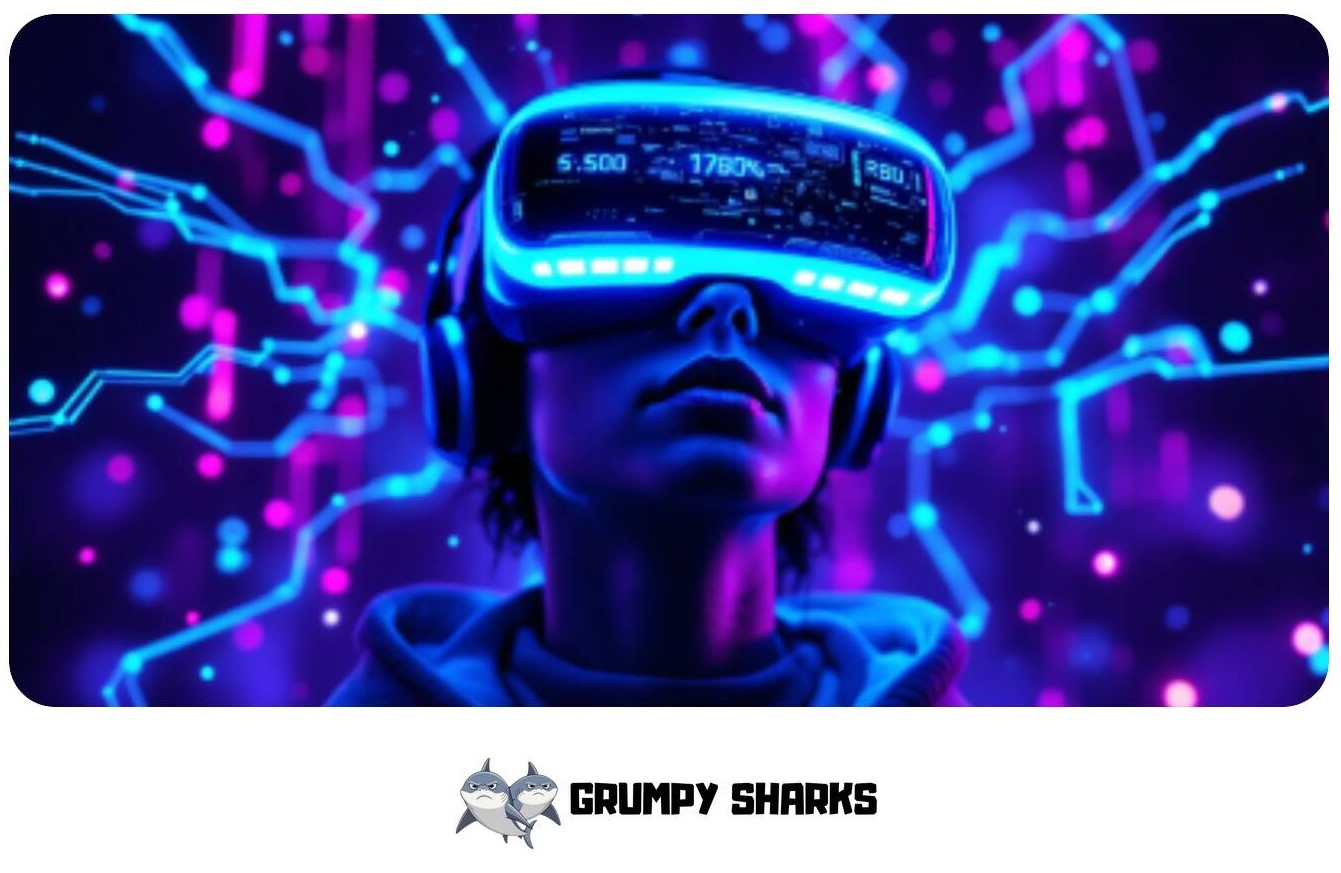
Virtual reality, NFTs, and the new definitions of “digital ownership”
Virtual reality (VR) has changed the way geeks experience and interact with digital worlds. Gaming has evolved from passive experiences (video games) to participatory experiences conducive to the player’s ability to engage, manipulate and co-create in an environment. VR cultivates worlds and experiences that transcend traditional experiences or imagination. The breakthroughs in technology have been staggering.
Platforms such as Oculus and even phones with the Gear app now provide an opportunity for geeks to live their fantasies in fully immersive environments with 360 degrees of stimulation. The conjunction of immersive realities, NFTs (non-fungible tokens) and the concept of digital property have fundamentally changed the idea of ‘digital ownership.’ Geeks can not only buy, sell and trade, but possess, demonstrate ownership of, and replicate all forms of digital art, virtual property, and many collectibles, in a manner that has opened new possibilities for capitalism in the era of the internet.
How Tabletop Roots Shape Today’s Immersive Experiences (e.g. D&D in VR)
Geeks take their origins in tabletop games, and they’re still shaped by them today. The introduction of virtual/augmented reality (VR, AR) in the 2020s has now allowed geeks to go on fully immersive explorations into their favorite tabletop games. Specifically Dungeons & Dragons (D&D) in VR allows gamers to literally step into the shoes of their respective character and experience campaigns with friends in ways only dreamed of until recently. Immersive experiences utilize the same principles of collaboration, storytelling, creativity, and escaping to other worlds, but now with a fuller sense of depth and interactivity that is tech-enabled.
Future Visions: AI, Augmented Reality and Persistent Digital Worlds
As we look to the future, the next phase of geek culture will be undoubtedly AI and augmented reality (AR) and further exploring digital immersion. With AI, we will be able to create worlds that are dynamic and adaptable, real-time concepts that will reimagine what it means to play and engage with digital environments. An AR experience will advance this phenomenon and allow us to utilize our real-world space with digital space side by side, engaging our geekness in an entirely accessible and interactive way.
As the future evolves, we are already seeing what persistent digital worlds look like, especially in the context of the metaverse. With AR, you will be able to step into these online spaces and experience your passions in a way that almost feels real, as the physical and online spaces we participate in develop interacting in the many possibilities of our geekness. As technology continues to evolve, so too will our ideas of what it means to be a geek.
The upcoming 2020s and rolling into discussions about beyond should be exciting for geek culture as the borders between fantasy and reality continue to blend. Emerging technologies from VR gaming to AI-powered digital worlds will allow geeks to lead the future of both entertainment and technology in ways we can only begin to imagine. As geek culture continues to turn to these immersive digital experiences, the future looks promising for a new era of digital culture and the geek identity is not just accepted but is fast becoming celebrated as the future of contemporary culture.
#6 Conclusion — Riding the Geek Revolution
Geek culture has traveled from the fringes of society (arguably a basement somewhere) to occupying a central place in today’s media landscape, controlling a significant portion of technology, entertainment, and driving innovation. What was once confined to basement walls, or small communities is now influencing media, technology, and innovation in the mainstream. Geeks are not outsiders; they are creative people making their mark, and helping push and drive new industry innovation across sectors.
To-day, being a geek is about shared passions and curiosity that fosters a learner’s community. In our time, the idea of being geeky has evolved into a core, central part of culture and creativity that celebrates innovation. Weakly embracing your geek is not only an experience of self-discovery, it is how you will help to move society and culture.





